How Custom T-Shirts Can Help You Win More Customers
See how to use t-shirts as a reliable, predictable, and scalable source for winning new customers.

In marketing, your job typically comes down to one thing: winning customers. Every facet of marketing—social media, email, conferences, branding, digital ads—should ultimately be contributing to one thing: gaining customers and building revenue.
Often thought as more of a nicety than a necessity, can t-shirts really be a reliable, predictable, and scalable source for winning new business, can they?
Our answer: a resounding YES. Let us lay out the case for why t-shirts are a viable marketing spend, and how to use t-shirts to gain more impressions, and ultimately, more customers.
Why t-shirts are valuable
Yes, we know people like t-shirts, but they’re rarely thought of as a viable source of customer acquisition. However, t-shirts have way more marketing power than you may realize.
High visibility
One pros of t-shirts is that they’re highly visible. They’re on people, so your brand is front and center. They’re not a business card that gets tucked away in your pocket, or an AdWords ad that we’ve all trained ourselves to ignore.
One of the most common compliments to give someone is on their outfit. That’s because one of the first things you notice when you see someone is what they’re wearing, meaning your t-shirt is going to be one of the first things someone notices when they see a person wearing it.
High emotional engagement
Another big difference between t-shirts and most other marketing tactics is that t-shirts enforce brand loyalty. We just said how someone is dressed is one of the first things people will notice that day. So if someone is putting on your shirt, they’re doing so knowing they’ll be seen in it. Odds are if they’re choosing to fly your brand's colors, they align with you in some way.
Also worth thinking about is the high emotional attachment that people get towards t-shirts. I bet right now you can picture a t-shirt you own that you’ve had for years, that’s been washed just the perfect amount of times. That’s a high amount of emotional attachment for a promo item.
High perceived value
People are used to spending $20–$30 on a t-shirt at the store, but they don’t realize that ordering shirts in bulk is actually much less expensive. When you give someone a t-shirt, they automatically assign that $20–30 value to it, making them thankful for a valuable gift, but in reality, you might have only spent $6–$7 per shirt.
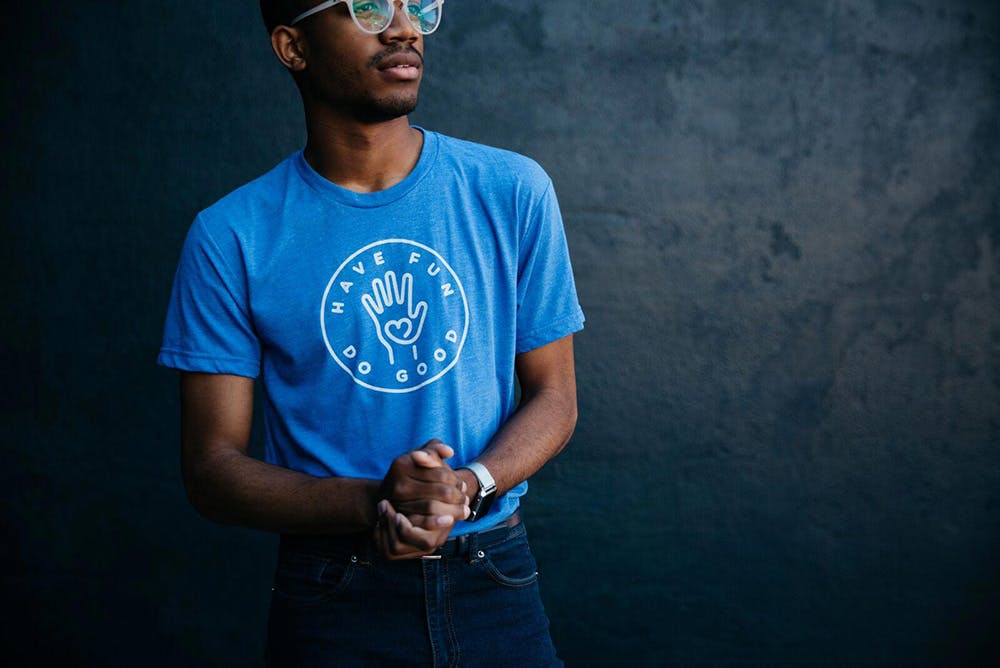
It’s time to start treating t-shirts like any other marketing expenditure
There’s one acronym, three little letters, that marketing revolves around. ROI (return on investment), is the amount of revenue you gain in relation to the amount of money you spend to get it. Successful marketing is all about not only gaining exposure for your brand, but making sure that exposure turns into profit.
One of the problems a lot of marketers have with investing in t-shirts is, “how do I quantify this?” Sure, handing out t-shirts is great, but how can you know what return to expect for each t-shirt I hand out?
If you’re letting this stop you from giving out t-shirts, you’re making a big mistake. No, the metrics aren’t quite as exact as AdWords or your email click-through rate, but here’s an idea of how to quantify your t-shirt spending.
Cost per impression (CPI)
According to the Ad Speciality Institute, the average giveaway t-shirt gets worn 4.32 times per month and earns 365 impressions per month, with an impression being any time the shirt is viewed or seen.
Assuming that your t-shirt is kept for even just one year, that’s 4380 impressions per t-shirt. Not bad.
Now let's assume you ordered in bulk, ordering 100 t-shirts with a one color design on the Next Level 6210. Your shirts would cost you $7.28/shirt, making your cost per impression $0.0014474, or your cost per thousand impressions (CPM) $1.66/shirt.
Not bad, considering the CPM averages of other alternatives (per AdStage).
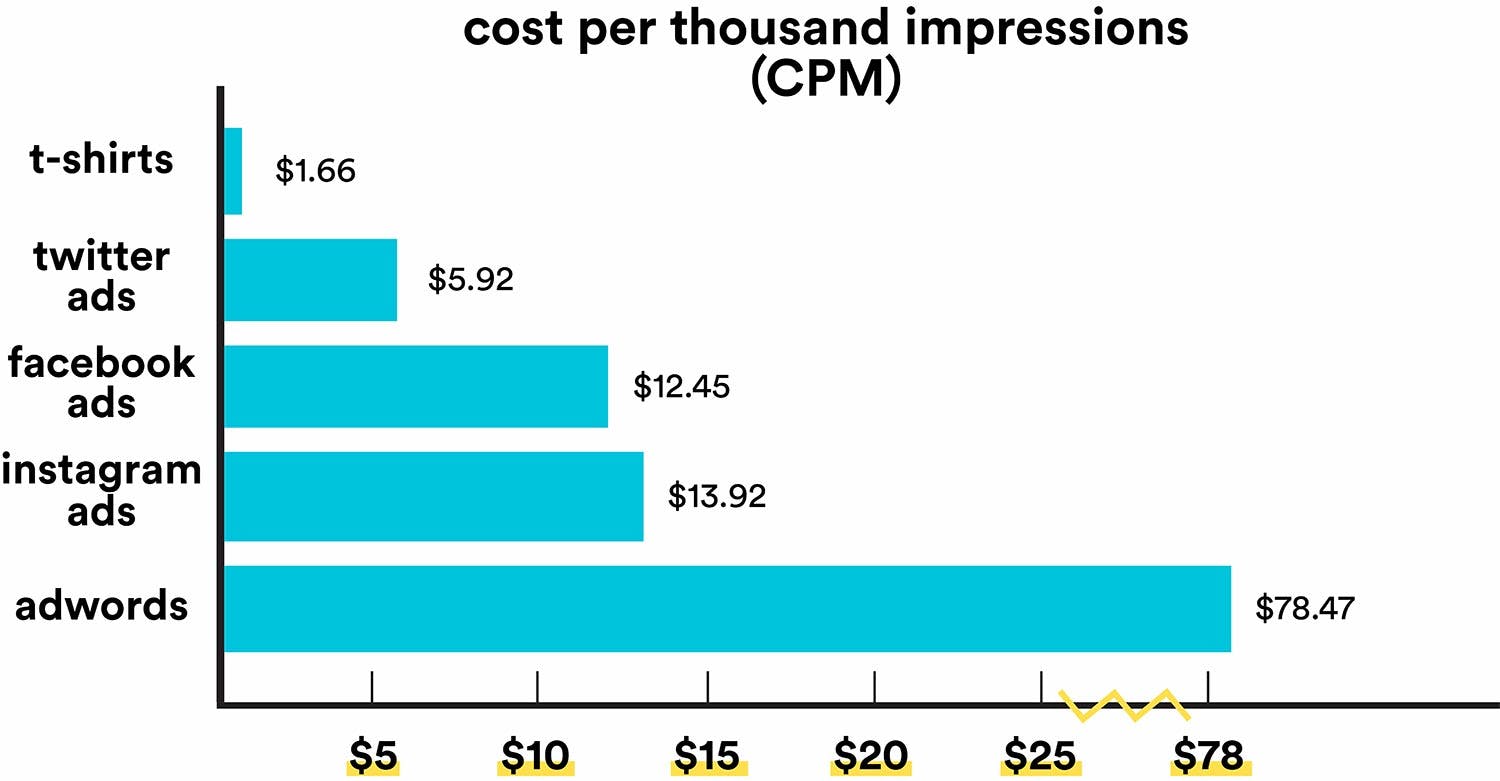
From an impressions standpoint, t-shirts seem like a beyond valuable investment. But how do we track the results?
How to measure the ROI of a t-shirt
Quantifying the number of impressions a t-shirt can earn you isn’t too difficult, but measuring return on investment (ROI) is a bit trickier.
One advantage that digital advertising has on t-shirts is tracking. If someone ends up clicking your ad and purchasing your product, you’ll know where they came from. Since there’s no obvious way to track how someone got from seeing your t-shirt to purchasing your product/service, measuring revenue requires a bit of creativity. There are, however, a few ways to go about it.
Put an offer or a unique URL on the inside tag or hang tag
This option is cool because it can actually make your shirts even nicer. Something you could do to track ROI is have a specific offer code printed on a custom printed tag or hang tag. That way, only the people who have the t-shirt will know the code, and you can attribute any new customers who use this particular offer code to the t-shirt.
So if you’re at a conference handing our t-shirts, you could have your offer code be CONFERENCETee18. Then, when people redeem that offer you’ll be able to attribute that sale directly to the t-shirt.
You can also execute this idea by creating a landing page for them to go to, and give it it’s own unique URL, like yourcompany.com/ConferenceTee18. This works for you in a couple of ways. One, you can cater the content of that page specifically to them because you know where you met them, and two, you can track any sales coming from that URL.
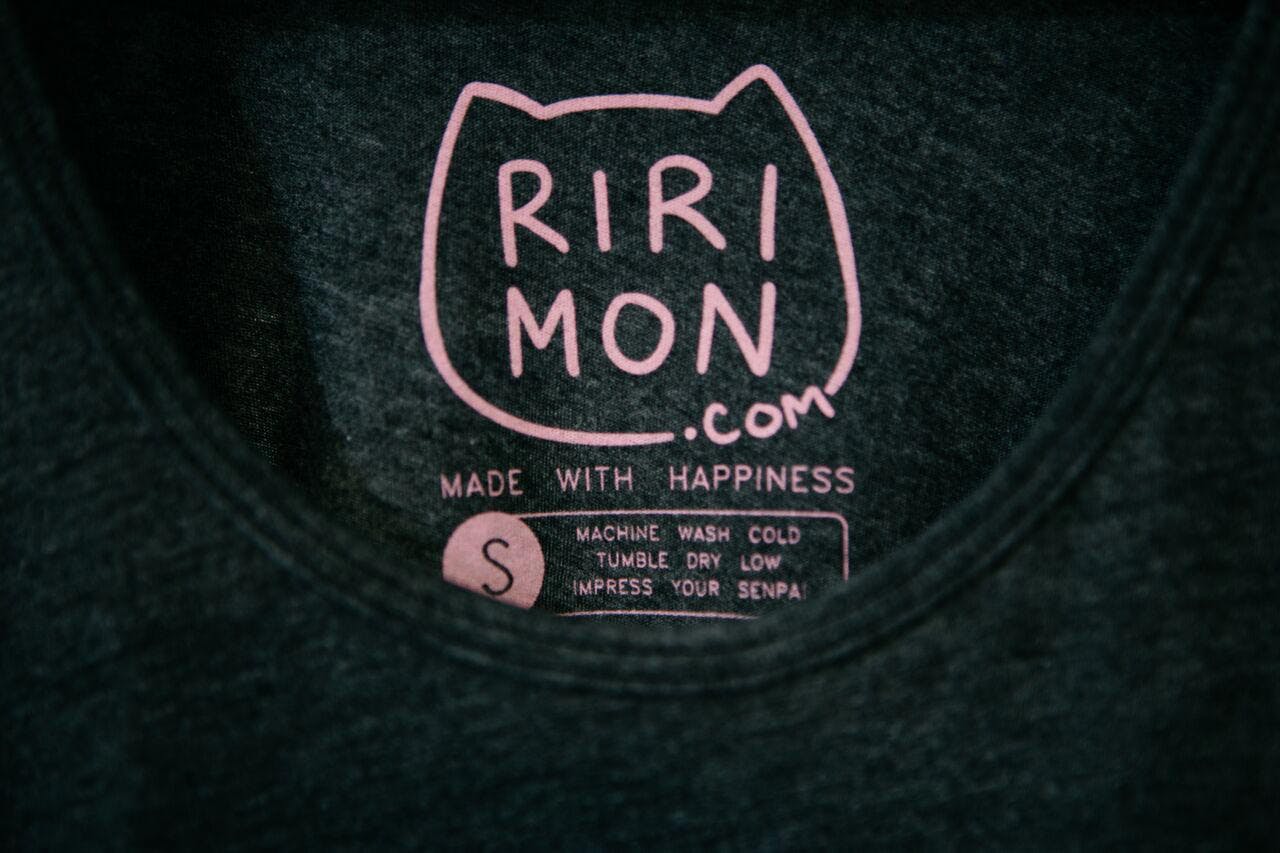
Lead generation source on your website
Digital marketing is all about generating leads. Marketers’ jobs are to fill their marketing funnel with as many leads as possible, then guide them from the first time they see your brand, to purchase.
As an easy to generate leads: offer a free t-shirt. Have a free t-shirt offer pop up maybe 15–20 seconds after someone lands on your website. All they have to do is enter their email (or more information if you’d like), and you collect that lead and send them a free shirt!
Even if you’re worried about giving away too many, simply offer them a chance for a free t-shirt. Then pull your list of entries and give away whatever amount you feel comfortable.
Design software company InVision does this really effectively. They had a designer throw a cool shirt design together a while back, then had a simple pop-up asking people to sign up for a chance at a free shirt.
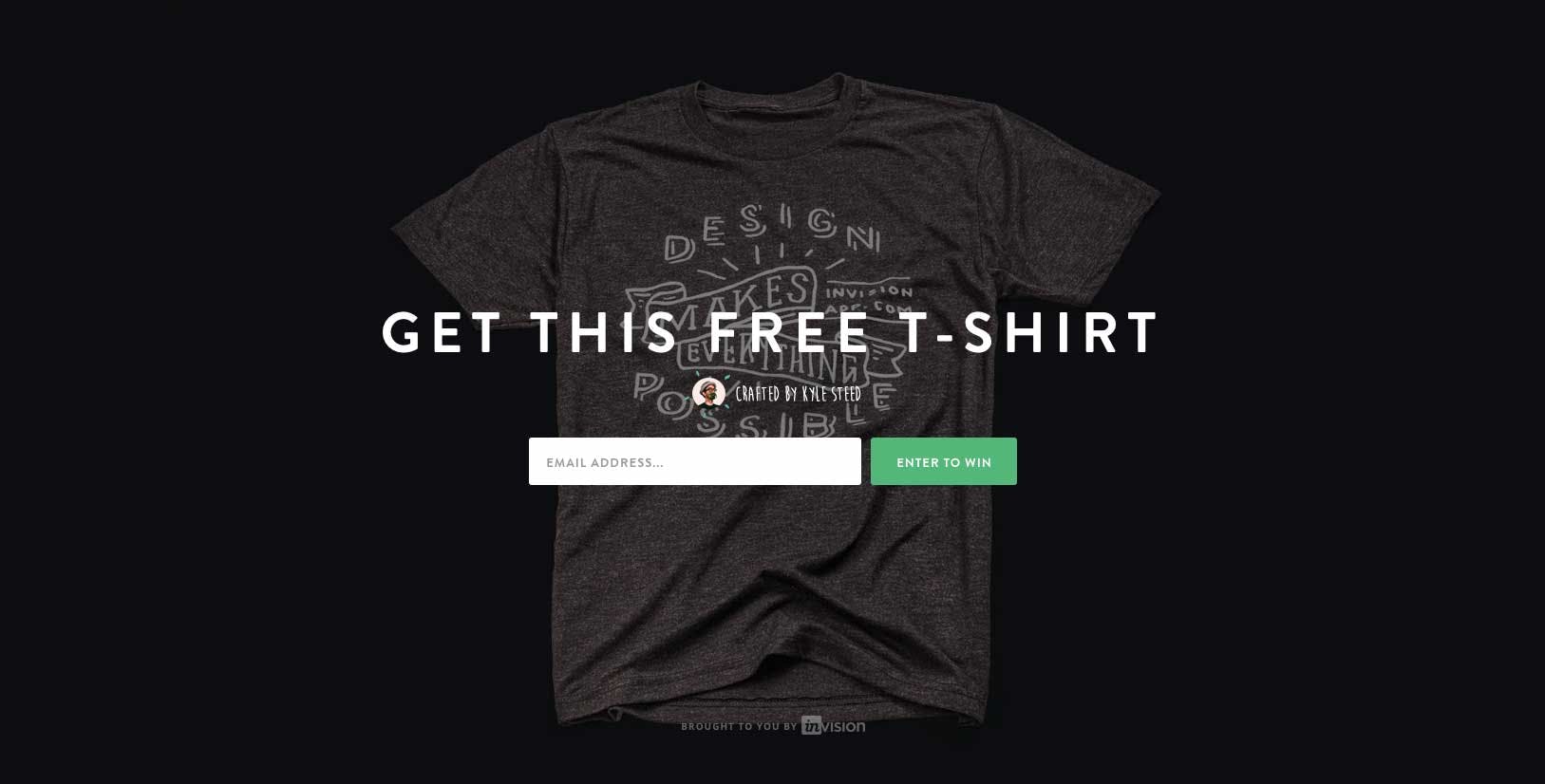
Demand for shirts got so high that they had to build an entire marketplace! Not only was it highly successful, but they are now selling their t-shirts, meaning rather than pay for leads, people are paying to become their leads.
Tips for t-shirts that will win customers
It’s clear at this point that t-shirts are effective, but not all t-shirts are created equal. Lets talk specifics about the t-shirts themselves, and tips for getting the optimal t-shirt for your cost per impression, and ultimately, your return on investment.
Low color, high volume
This is a great trick for costs your costs low. Given how screen printing works, the more colors in your design, the more expensive your shirt will be. So keeping the color count low will always ensure that your t-shirts are less expensive. Plus, we’ve always found that people like to wear 1–2 color t-shirts the most, so this works in your favor anyway.
Always try to order in bulk as well, if possible. The more shirts you order, the better your price per shirt is going to be. If you can, try to order in batches of 100, 200, or even 500 if you know you’re going to use them.
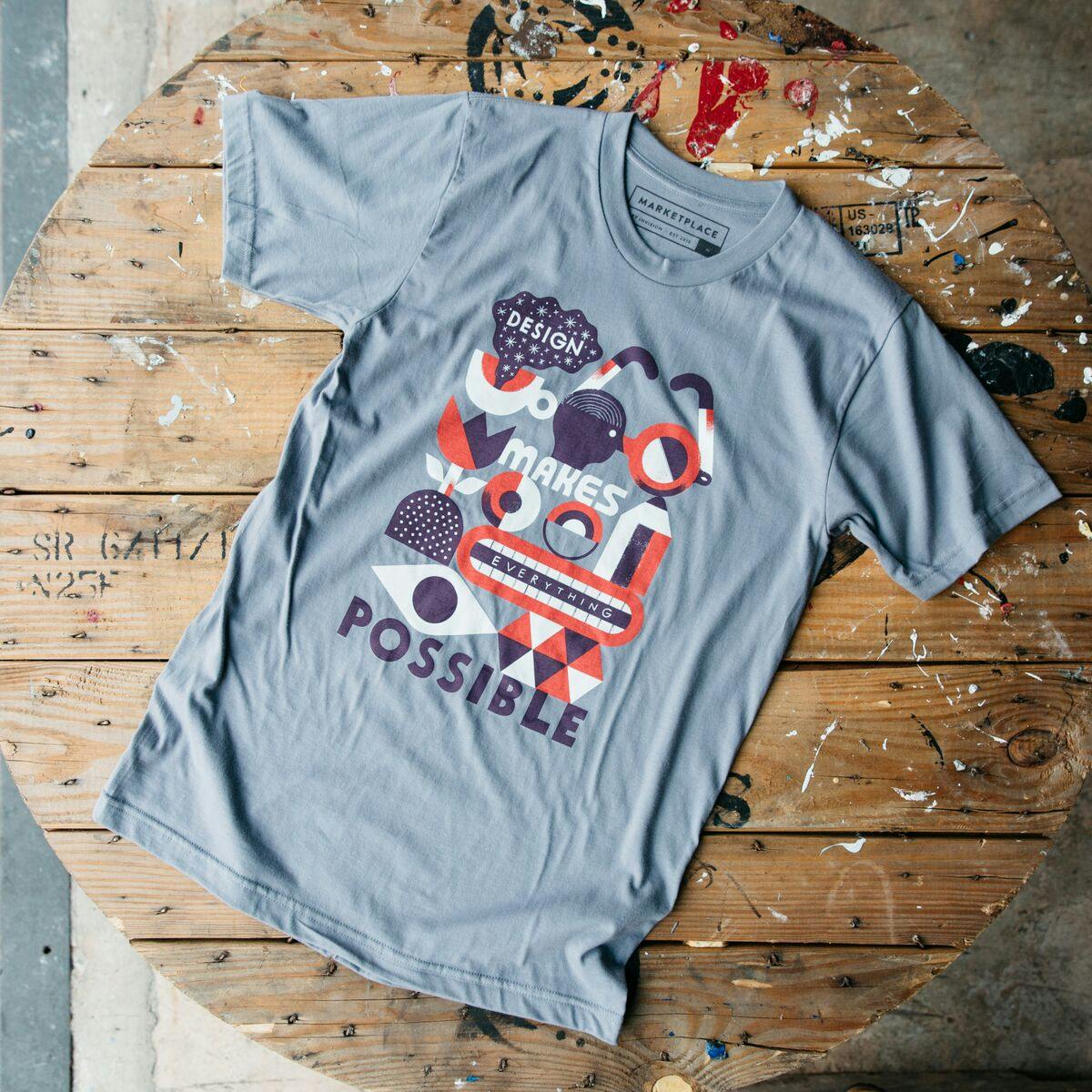
Recognizable, but good-looking design
Another key for a good marketing t-shirt is one that’s recognizable, but still stylish. Your design needs to find the balance of being recognizable in relation to your brand, but also something that’s more than just your logo.
The InVision shirt we mentioned earlier does this perfectly. Rather than throw their logo in the middle, they came up with a unique design around their rallying cry of “Design Makes Everything Possible.” It’s associated with their brand but still looks sharp, meaning people will want to wear it.
Don’t sacrifice quality
When thinking ROI of t-shirts, it’s tempting to just go with the cheapest option, but this is a pitfall for so many of these free t-shirt campaigns.
When you go with a low-grade t-shirt, you’re sabotaging your campaign from the start. Your t-shirt is heading straight to the bottom of someone drawer (at best), waiting to be rediscovered during spring cleaning to either be donated or thrown away.
The success of your t-shirts hinges on it being a shirt people will actually want, so make sure you get the right shirts and make your order worth it. Brands like Bella+Canvas, Next Level, or American Apparel are great places to start. And make sure you’re working with a printer who works with water-based ink. It's softer, last longer, and makes a world's difference.
So, can t-shirts really be a reliable, predictable, and scalable way to win new business? Absolutely.
With the cost per thousand impressions (CPM) coming in way lower than most digital marketing expenditures, there’s a ton of value in tees. And while tracking is tricky, if you’re willing to get creative, finding a way to track and attribute revenue to t-shirts is doable.
To make sure you get t-shirts that are worthwhile, give us a shout! Our team of t-shirt experts would love to walk you through the process and make sure you get t-shirts that will win you more customers.


